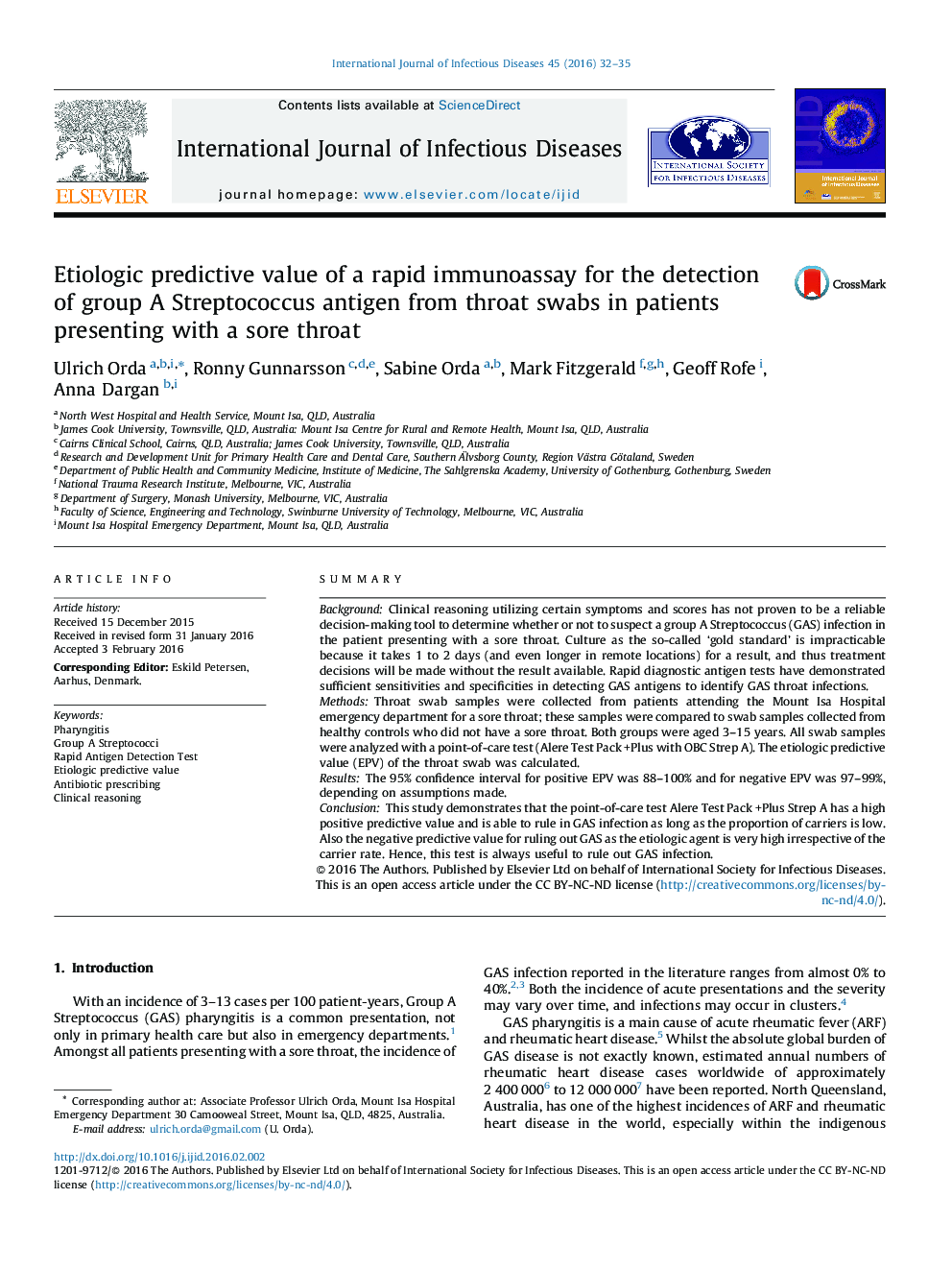| Article ID | Journal | Published Year | Pages | File Type |
|---|---|---|---|---|
| 3361750 | International Journal of Infectious Diseases | 2016 | 4 Pages |
•This study utilized a new statistical method called the etiologic predictive value, taking the rate of carriers into account.•A negative test outcome can be used in any setting to rule out a group A Streptococcus (GAS) infection.•A positive test outcome can be used in some settings to rule in a GAS infection.
SummaryBackgroundClinical reasoning utilizing certain symptoms and scores has not proven to be a reliable decision-making tool to determine whether or not to suspect a group A Streptococcus (GAS) infection in the patient presenting with a sore throat. Culture as the so-called ‘gold standard’ is impracticable because it takes 1 to 2 days (and even longer in remote locations) for a result, and thus treatment decisions will be made without the result available. Rapid diagnostic antigen tests have demonstrated sufficient sensitivities and specificities in detecting GAS antigens to identify GAS throat infections.MethodsThroat swab samples were collected from patients attending the Mount Isa Hospital emergency department for a sore throat; these samples were compared to swab samples collected from healthy controls who did not have a sore throat. Both groups were aged 3–15 years. All swab samples were analyzed with a point-of-care test (Alere Test Pack +Plus with OBC Strep A). The etiologic predictive value (EPV) of the throat swab was calculated.ResultsThe 95% confidence interval for positive EPV was 88–100% and for negative EPV was 97–99%, depending on assumptions made.ConclusionThis study demonstrates that the point-of-care test Alere Test Pack +Plus Strep A has a high positive predictive value and is able to rule in GAS infection as long as the proportion of carriers is low. Also the negative predictive value for ruling out GAS as the etiologic agent is very high irrespective of the carrier rate. Hence, this test is always useful to rule out GAS infection.
